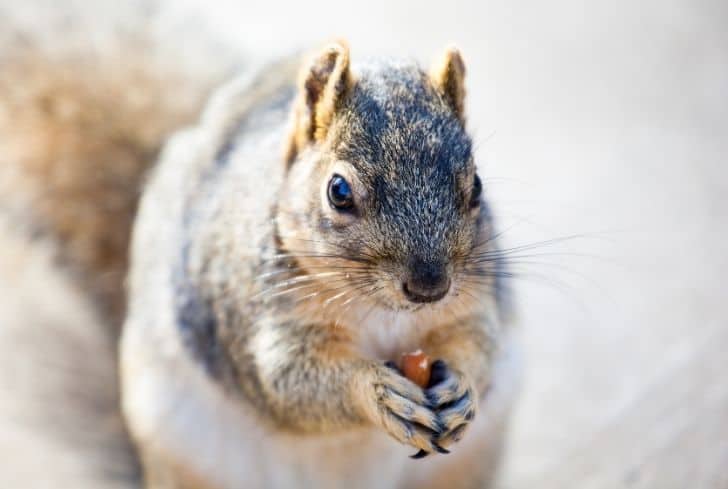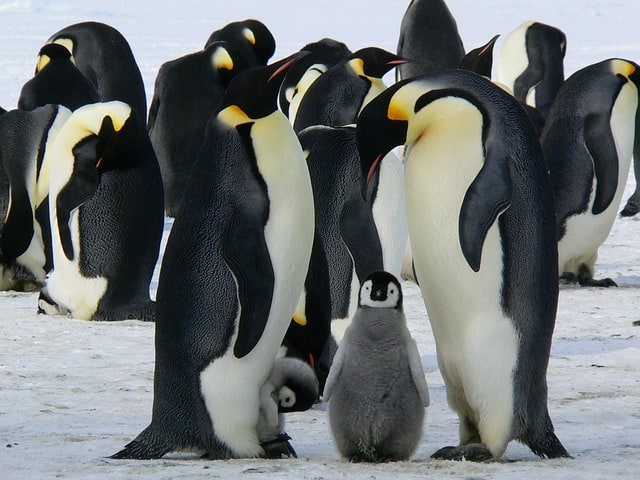How Can Animals Drink Dirty Water? (Any Why They Do Not Get Sick)

The “clean-water” problem is there everywhere. Humans easily contract diseases from dirty, contaminated water. What about animals? Can they drink dirty water? Do they get sick? Are humans the only animal that requires “clean water”? Let’s find the answers.
There are many layers to this question. First, there are only a few handfuls of water bodies in the wilderness and many are ‘dirty’ according to human standards. Wild animals rely on the same dirty ponds or streams to quench their thirst. Regular consumption from the same or similar source will help animals ‘get used’ to the dirty water and develop a sort of resistance against certain bacteria in it. Over time, their immune system adapts and builds endurance.
This is only true when the microbial population in the water bodies is stable. If there’s a sudden change in microbial profile in a particular waterbody, of course, the outcomes will be deadly. The survivors will then pass the ‘resistance’ to their offspring and develop a tolerance towards dirty water.
Second, not all water bodies are dangerously contaminated. Plus, not all microbial illnesses are fatal enough to kill animals.
Third, most animals have an extraordinary sense of smell which helps them determine whether to drink or abandon the idea of drinking from a particular water source.
Why Animals Do Not Get Sick After Drinking Dirty Water?
There are several answers to this question:
- If ‘dirty water’ was always disease-causing and deadly, many species would have probably perished. So, the real deal here is in what way is the water ‘dirty’ or ‘unclean’. If the ponds contain silt, it is unlikely that it would make animals seriously sick.
- Different microbes make different species sick. For example, Vibrio cholerae, the bacteria that cause cholera in humans doesn’t affect hippos. Similarly, the same microbe in ‘contaminated water’ will have different effects on the members of the same species.
- Some animals do get sick. For example, close to 90% of deer in North America gets infected with giardia, a microscopic parasite that causes giardiasis. Giardiasis spreads through contaminated water and food.
- Another theory is that animals have stomach acids that are stronger enough to kill disease-causing microbes. Since conclusive evidence is lacking, we cannot comment on it.
How do Animals Drink Water?
Cats, canines, and ruminants curl their tongue backward while dipping it in the water and then quickly pull it up – a movement called lapping. Domestic cats move their tongue quite faster, 3 times per second, which allows them to drink a moderate amount of water.
All the other big cats such as jaguars, lions, cheetahs, and leopards follow the same drinking technique but a slower pace which allows them to drink more water. When dogs lap the water up, they spill water all around whereas cats are neater drinkers as they touch only the surface of the water with their drinkers.
Elephants use their long trunk to drink. They suck the water up like a straw and squirt the water into their mouth.
Bats send squeaks and listen for the bouncing echoes to detect water sources. Then they will dive in and scoop up a sip into their mouths. They rarely use their sight to locate and determine the place of water.
Zebras in the wilderness need more water – more than a gallon at one time. Just like horses, they put mouth below water level and then suck the water up.
Most birds drink some water every day, but they don’t drink the way animals do because of the difference in anatomy. For one thing, they lack lips and cheek. Most birds drink by filling their bill with water then tilt the head back to send water right into the stomach. However, birds can lap water into their bill just like cats and dogs do. Pigeons and doves are exceptions as they can suck water while their head is down. They don’t need to tilt head upward to swallow.
Marine mammals meet their water intake with their food while the marine birds and reptiles drink saltwater but will excrete it through special glands.
How do Animals Know to Drink Water?
The same way we humans do. The answer to what makes animals thirsty and how do they know to drink water lies at the central nervous system.
When the animal body starts to run low on water, a series of physiological changes take place. Scientists found that a specialized part of the animal brain called lamina terminalis guides the thirst responses. The cells within this region also collect and monitor information such as whether the animals have fed or drunk recently, changes in body water and salt levels, blood volume, etc. The output is then transmitted to other parts of the brain and motivates an animal to seek water bodies.
What Animals Drink the Same Water We Do?
All organisms have the right to clean water and animals aren’t any exception. But unfortunately, animals don’t have the luxuries that humans do when it comes to water quality. In the wilderness, they will be forced to or adapted to consume water with dust, slit, foul taste, or contaminated with bacteria or protozoans.
Water quality is one of the many factors determining the volume of water animals consume. Dirt or foul odors, for example, may discourage them from drinking. Some species exhibit tolerance to dirty, murky water whereas some others develop diseases and die.
Talking about what animals drink the same clean water we do, the answer is none (well, our pets and farm animals are the only exceptions).
Which Animal Drinks the Most Water?
The land mammal that drinks most water per pound of its body weight is the cow. An adult cow used for milk production can drink up to 100 gallons of water a day. In the case of lactating mothers, this number can even increase two-fold, especially during hot summer months.
As a rule of thumb, the more the body weight, temperature, and humidity, the more the daily water intake. Daily water intake (freshwater free of manure and dirt) also depends on the animals’ age and health.
Which Animals Don’t Drink Water at all?
Most animals need water for survival. However, the animal kingdom has some species which do not or rarely drink water.
- Kangaroo Rat: This North American native rodent can, astonishingly, go its entire life without ever drinking a single drop of water. They survive primarily on the seeds and beans high in water content.
- Sand gazelles: They live in dry, arid climates and drink fresh water rarely. But they have this unique ability to shrink their liver volume up to 30%. The animals can reduce the number of active mitochondria and slow down the breathing. This conserves water because the lungs need to be kept moist for smooth breathing. Less breathing means less drinking.
- The hummingbird: World’s smallest bird substitutes water with nectar.
- Koala: The iconic Australian animal’s name itself means “no drink” or “without water”. Yes, they never drink water. They rely on the water content from eucalyptus leaves.
- Thorny Devil: Australia’s thorny devil doesn’t drink water because their thorns are there for a reason – to absorb moisture from the air during cold nights or rain.
- Water-Holding Frog: During dry periods these frogs secrete a mucus-like cocoon to prevent water loss from the body before going into hibernation. Scientists found that they can survive this way without water for two years or more.
How Much Water do Wild Animals Drink in a Day?
The answer to this question depends on several factors such as,
- Animal’s size and weight
- Age of the animal
- Animal’s growth stage
- Pregnancy and Lactation
- Level of animal exertion
- Animal feed
- Humidity & Temperature
Most wild animals, especially predators, have a fast-working digestive system, which allows them to gorge themselves and then go for seconds shortly after. If readily available, they will drink water every day; at the same time, they can also go 4 – 5 days without drinking water. When drought hits, they rely on the body fluids of the prey to meet the moisture requirement of their body.
Listed below are some animals and their water consumption in gallons/head/day:
- Elephants: Adult elephants require an enormous amount of food and water. They drink up to 50 gallons of water a day.
- Tiger: Most cats despise water but tigers love both taking bath and drinking water. On a hot summer day, they can drink up to 20 gallons of water.
- Zebras: Wild Zebras have been known to drink up to a gallon of water at one time. Daily consumption can go up to 20 gallons or more depending on humidity and temperature.
- Bison: They prefer grasses over water. They usually drink water once a day (5-8 gallons); it can go up to 12-15 gallons in the summer season.
- Deer: An adult deer will drink a total of 1-2 gallons of water twice or thrice a day
- Lion: An adult lion typically drinks about 1 gallon of water on a normal day.
- Cattles: They drink 10-20 gallons of water a day; Lactating adults need more water – approximately 18-20 gallons per day.
References:
https://fairgaze.com/fgnews/hippos-are-not-infected-by-vibrio-cholerae_71740.html
https://www.worldwildlife.org/stories/depending-on-clean-water-five-freshwater-animals






